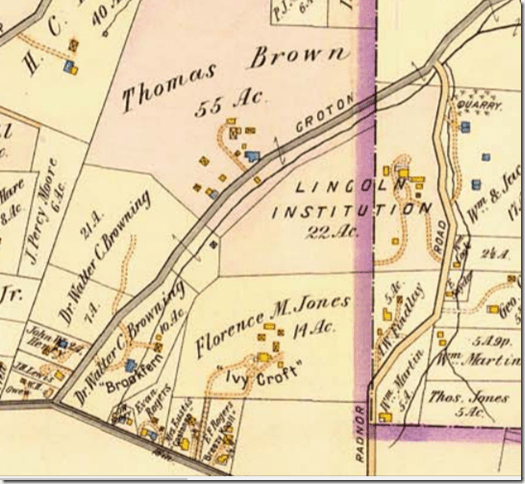The Lincoln Institution
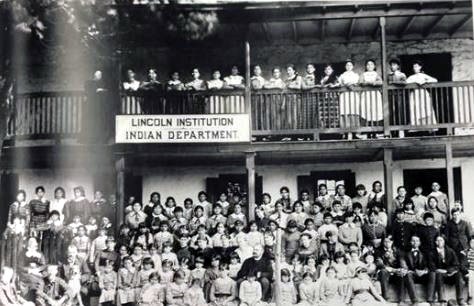
Like Carlisle, Lincoln was designed to civilize and assimilate Indigenous children into White society. The Lincoln Institution and Educational Home began as an orphanage for children of Civil War soldiers. Founded by wealthy white philanthropist, Mary McHenry Bellangee Cox, Lincoln evolved as an Indian Boarding School, modeled after Carlisle. The first group of girls arrived in 1883 from western Tribal Nations.
The Lincoln Institution at 324 S. 11th street was reserved for girls, while boys resided a few miles away at the Educational Home on 49th street and Greenway, in downtown Philadelphia.
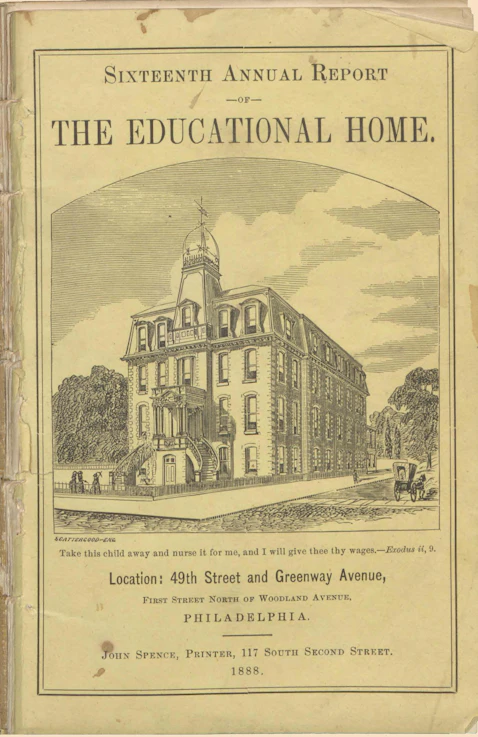
Several children were baptized and confirmed by the Episcopal church who supported the institution.
Read more...
Several reports were filed by the Board of Public Charities and investigated by the Society for Prevention of Cruelty to Children condemning the school for poor nutrition and physical conditions. The Indian Rights Association annual report in 1899, notes the inhumane treatment of “inmates” included boys being “stripped and flogged,” receiving “over a hundred lashes,” while another was forced to wear a “ball and chain” around his ankles while confined to a “dark and forbidding stable, where he was fed bread and water.” Beatings and whippings for slight offenses were routine like speaking at mealtimes or speaking out about the abuses or crossing the road to get a drink of fresh water.
Mary McHenry Cox denied allegations but in 1900, Lincoln lost its congressional funding of $167 per child, per year. Archival letters between Mrs. Cox and government officials like Mr. Walsh and Mr. Crew document the abuse that was common.
Documented correspondences also reveal that Mrs. Cox donated money to certain newspapers to ensure good publicity.
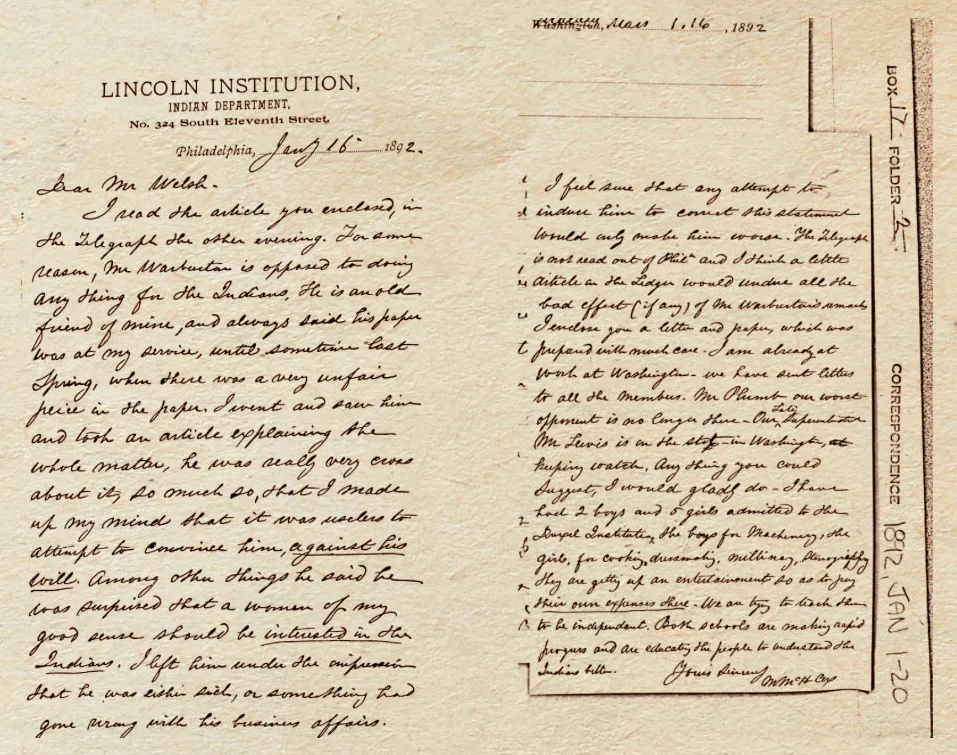
Letter from Cox to Mr. Welsh, Director of the Indian Rights Organization, 1892.
Like at most Indian boarding schools, students had their names changed, their hair cut, and were often punished for speaking their languages. When girls were of age, they were sent to work for white families on outings, similar to Carlisle.
After 1902, when the federal government ceased funding Indian boarding schools, Mrs. Cox sold Lincoln to continue educating Indigenous girls at the Ponemah summer retreat, a place two miles north of Wayne, Pennsylvania. Lincoln Institution is presently an apartment building called Clinton Place.
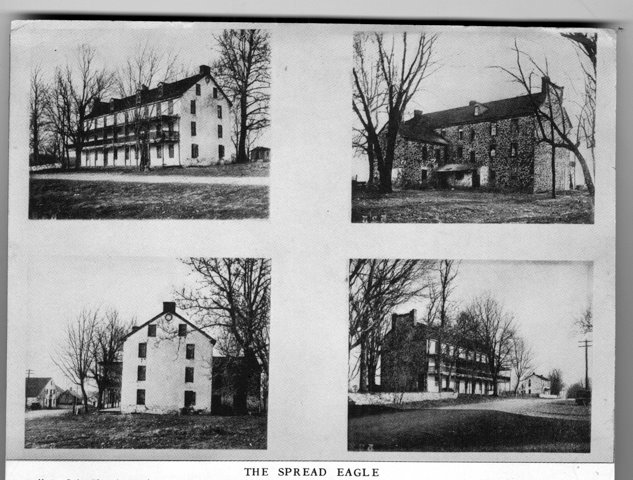
The Spread Eagle Inn and Ponemah (Land of the Hereafter). Tredyffrin Township, PA. Summer home for 100 Indian girls from The Lincoln Institution.
